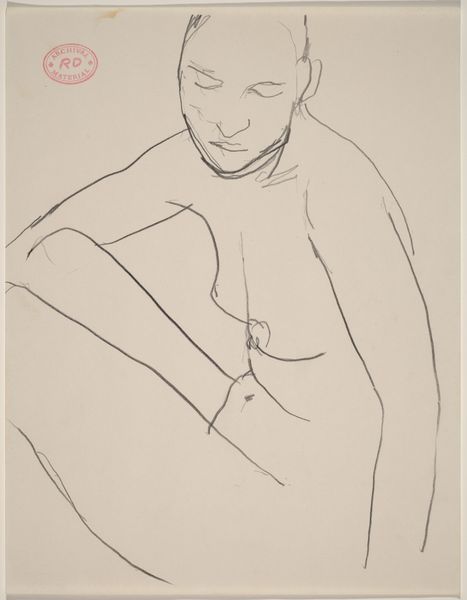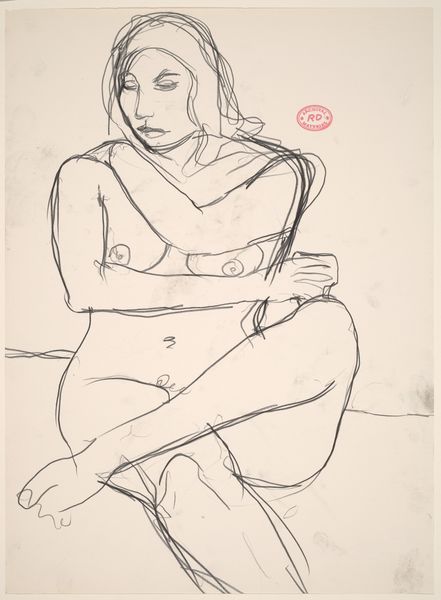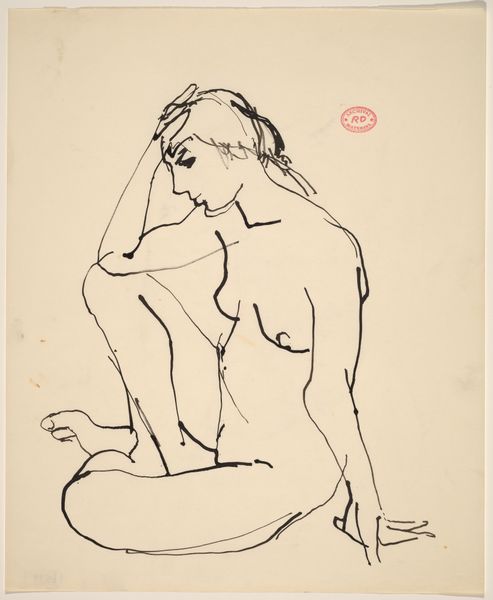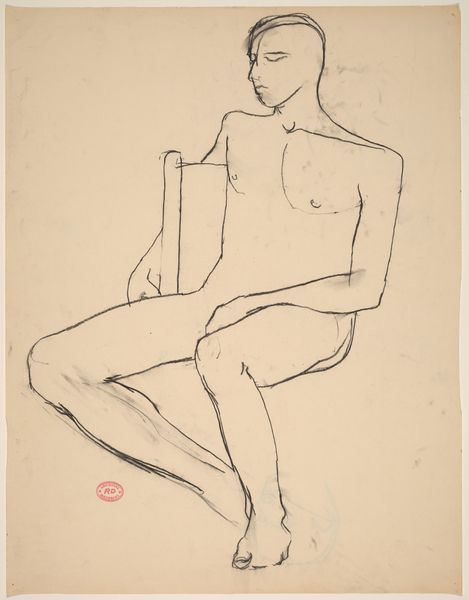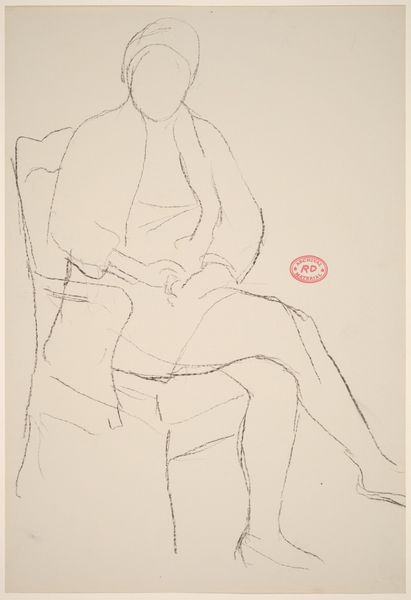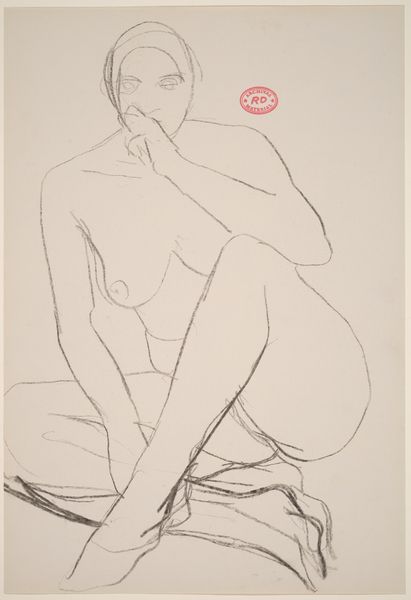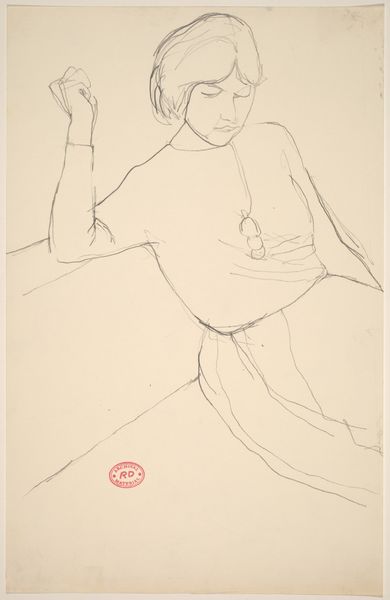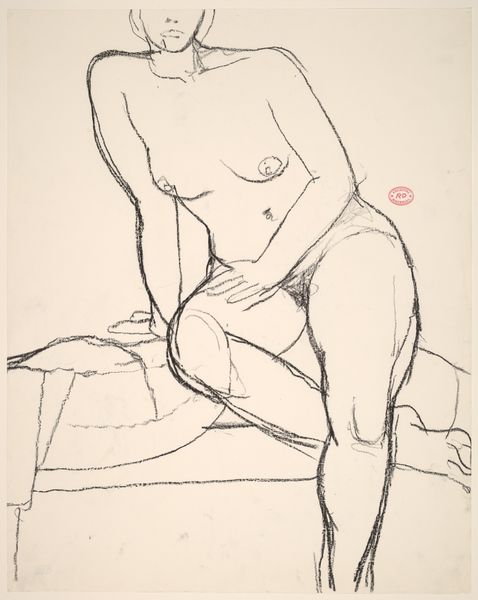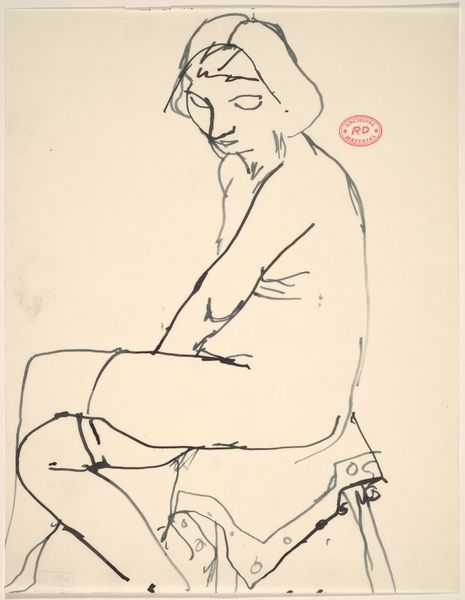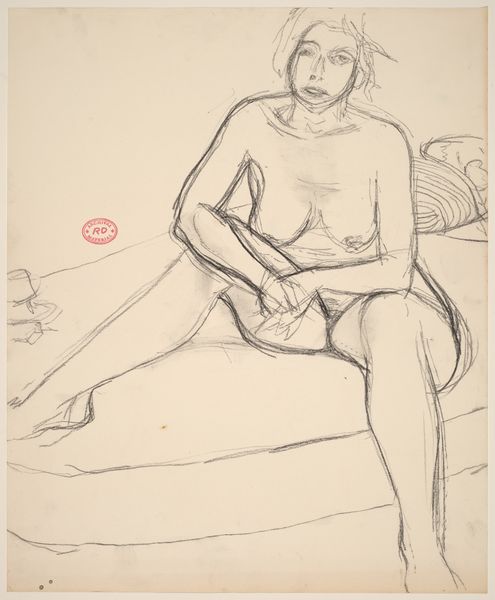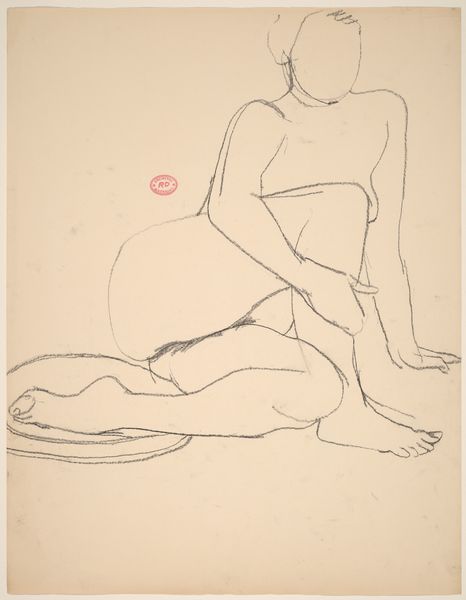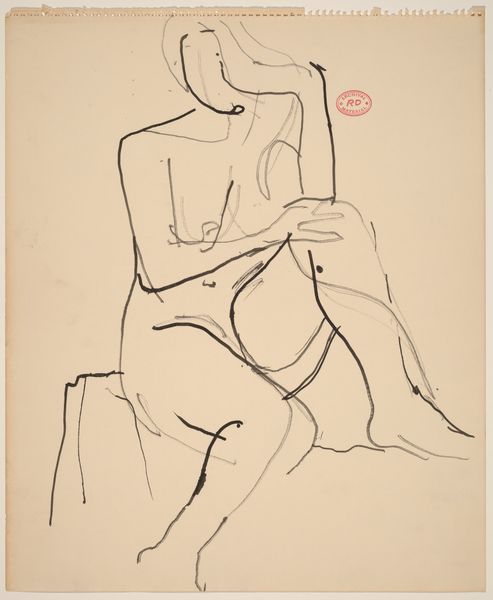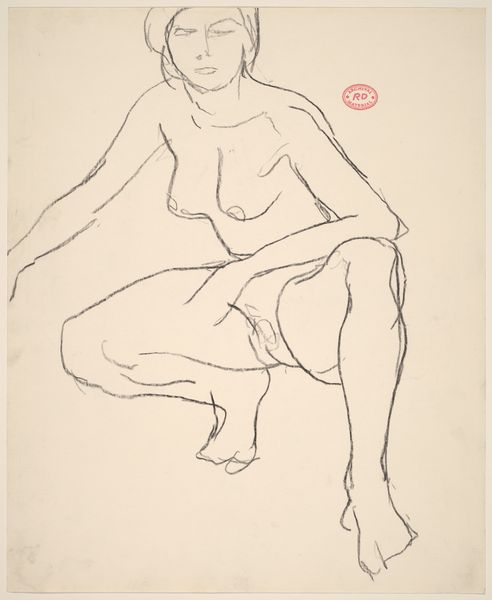![Untitled [seated female nude with crossed legs: side view] by Richard Diebenkorn](/_next/image?url=https%3A%2F%2Fd2w8kbdekdi1gv.cloudfront.net%2FeyJidWNrZXQiOiAiYXJ0ZXJhLWltYWdlcy1idWNrZXQiLCAia2V5IjogImFydHdvcmtzL2Q4N2QwYzk3LWZkY2ItNGI4OS04MGVlLTQ0ZjkzNzAwOTBkOS9kODdkMGM5Ny1mZGNiLTRiODktODBlZS00NGY5MzcwMDkwZDlfZnVsbC5qcGciLCAiZWRpdHMiOiB7InJlc2l6ZSI6IHsid2lkdGgiOiAxOTIwLCAiaGVpZ2h0IjogMTkyMCwgImZpdCI6ICJpbnNpZGUifX19&w=3840&q=75)
Untitled [seated female nude with crossed legs: side view] 1955 - 1967
0:00
0:00
drawing, ink, pencil
#
portrait
#
drawing
#
ink drawing
#
self-portrait
#
pencil sketch
#
figuration
#
bay-area-figurative-movement
#
ink
#
pencil
#
line
#
portrait drawing
#
nude
#
modernism
Dimensions: overall: 40.6 x 27.9 cm (16 x 11 in.)
Copyright: National Gallery of Art: CC0 1.0
Curator: Here we have an intriguing sketch, created by Richard Diebenkorn sometime between 1955 and 1967. It is simply called "Untitled [seated female nude with crossed legs: side view]" and is rendered in ink and pencil on paper. My first thought is: vulnerability. What's yours? Editor: Curator: A palpable, pensive intimacy. Her pose seems self-contained, almost melancholic. There's a striking sense of inwardness here, don't you think? Curator: I see the intimacy as a result of a longer tradition within the Western Canon. Representations of the female nude—and their consumption as objects for the (presumed) male gaze. Can this gaze be subverted through art? Editor: It's complicated, certainly. Nudity, historically loaded with the male gaze, is present. But what if Diebenkorn isn’t objectifying here? Perhaps he's attempting to depict a raw, human state of being, a universal moment of contemplation, stripped bare not for visual consumption, but for psychological exploration? It’s that subtle shift that modernism enabled. Curator: Interesting thought. Consider the role of the artist. It also feels like a very personal investigation for Diebenkorn, into form and figure, almost a meditative practice. Look at the spare use of line—it’s all about conveying essential form, emotion. The lack of detail keeps it open-ended. Editor: Yes, these are strong, confident lines! As we unravel the artist's intentions or subjectivities and position this drawing within art history, we should recognize the artist's subjectivity—and that the female body is not just an image or subject matter here. Curator: True, the image also touches on notions of beauty, albeit understated. There's a deliberate awkwardness too, breaking from idealized forms, and disrupting established artistic styles. Editor: Precisely. Looking at it again, I appreciate that quiet dignity Diebenkorn captured, away from voyeuristic reduction of women. Curator: I completely agree! Thinking through how visual culture reproduces or resists traditions is critical when we discuss works such as these. Thank you for unpacking the layers.
Comments
No comments
Be the first to comment and join the conversation on the ultimate creative platform.
